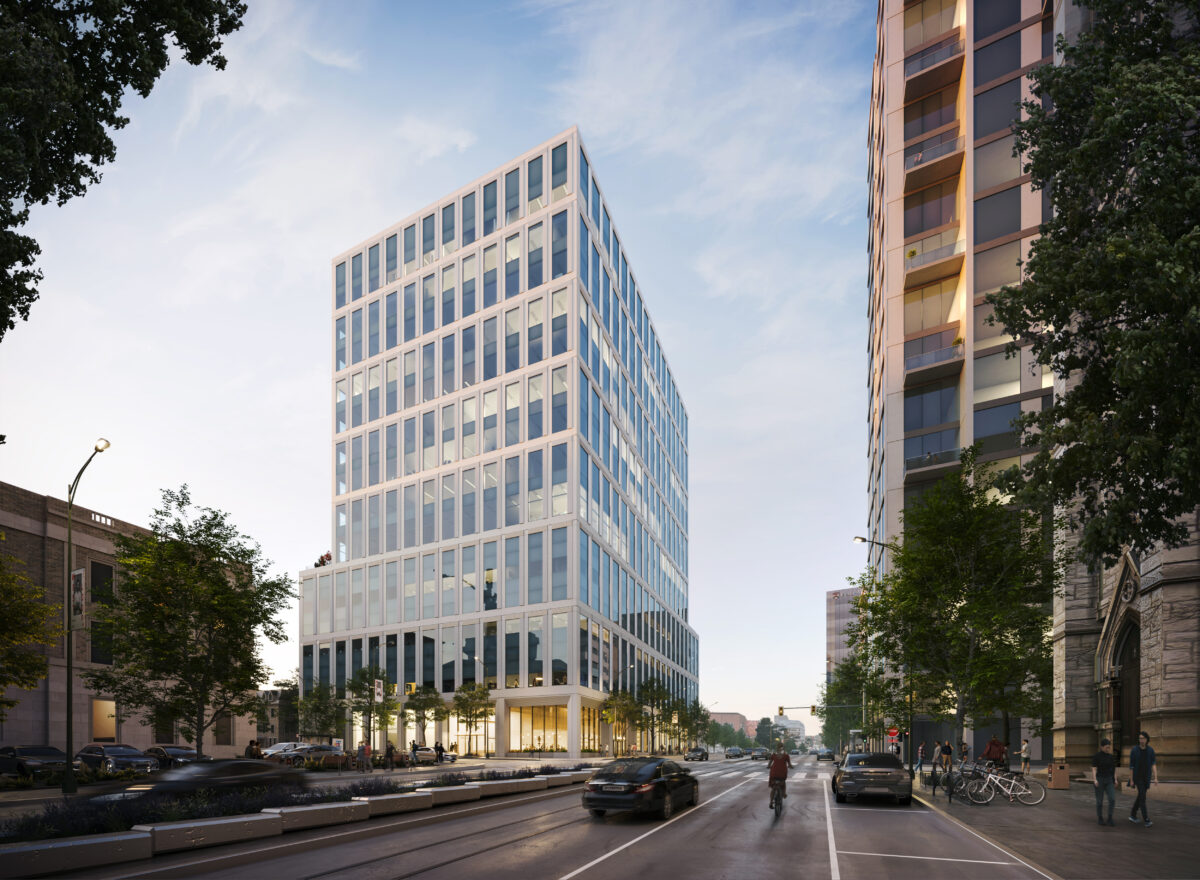
UCity life-sciences building boom continues with a 13-story proposal that minimizes parking
The energy-efficient building is proposed at 38th and Chestnut Streets.
University City could be getting a 13-story laboratory and office building at 38th and Chestnut Streets, the heart of Philadelphia’s largest life sciences node.
Earlier this year the development partners, Chicago-based Sterling Bay and New York-based Botanic Properties, announced that they acquired 3801 Chestnut St. for life sciences development. But now more details are available, revealing an energy-efficient design, two retail spaces, and minimal parking.
“We will be building this on a speculative basis, but the target tenancy is early-stage biotech companies and academic tenants:’ said Joshua Zinns, founder and managing principal of Botanic Properties.
Philadelphia area has 4.6 million square feet of life sciences inventory, with another 2 million square feet of laboratory space under construction. Industry clusters have grown in the suburbs, Navy Yard, and Wilmington, Del. Even Center City, home of the region’s traditional office sector, is seeing interest from life sciences developers.
But University City is the heart of the regional laboratory sector. Vacancy rates in the city itself are below 2%.
The market has attracted development interest in part because traditional office uses are in doubt after the rise of remote work, but the recent spate of projects has raised questions about the market’s ability to absorb more space.
“We’re very excited to be entering into this market that we view to be an internationally dominant life science cluster,” said Zinns.
3801 Chestnut St. is just south of a new development from Wexford Science + Technology, which has been a major player in enlivening and rebuilding the long somnolent Market Street corridor in University City. Wexford’s development would bring another 13-story life sciences building with a grocery store at ground level and a vast parking garage. A taller building on the same site, to be built later, would include more life sciences uses and more parking.
“We view University City as being a very transit accessible, walkable neighborhood,” said Alex Adarichev, head of development at Botanic Properties. “There’s plenty of parking. Others are doing parking garages, which we feel are sufficient for the neighborhood.”
University City is a transit hub served by multiple trolley lines, highfrequency bus routes, the Market-Frankford heavy rail, and regional rail. The developers of 3801 Chestnut plan to offer about 45 auto spaces on one floor of underground parking. Fifty-eight bike racks will be offered as well, with 16 being outside the building. The area is easily navigable by foot and bike.
Developers are planning two food and beverage spaces for the building. The retail spaces do not yet have tenants, but Botanic said it wanted to find at least one food and beverage provider that will serve breakfast and lunch at the Chestnut Street location (although they hope for evening hours as well).
The 3801 Chestnut project is getting a zoning bonus for providing public art, although the developers do not yet have an artist selected. They will also receive a “green building” zoning bonus. Adarichev said they would earn that bonus by ensuring that energy consumption would be between 15% and 20% less than a traditional office building. Measures are being taken to conserve water as well.
The project requires no zoning relief, so neighborhood groups will have little influence over its final form. But the Spruce Hill Community Association (SHCA) has been meeting with the development team because the project will eventually go before the city’s Civic Design Review committee, where it will be subject to a nonbinding critique.
“That [area] used to be a deserted stretch for pedestrians,” Barry Grossbach, chair of the SCHA zoning committee. “But it now has a degree of activity, which makes for a safer stretch of land. There’s satisfaction that the project adds to that section of the neighborhood.”
Grossbach said that SCHA has pressed the developers for details about the project’s hiring practices, impressing the importance of working with contractors who will hire locals and workers from demographic groups underrepresented in the construction trades.
“We’re highly sensitive to this question,” Adarichev said. “We know it’s at the forefront of people’s minds. It is our intent to provide opportunities for individuals locally and for disadvantaged groups. But there’s nothing specific we can comment on as far as live action items.”